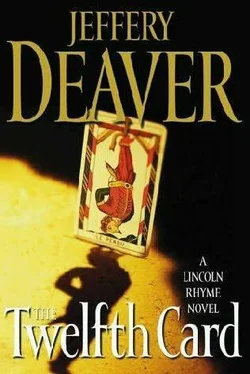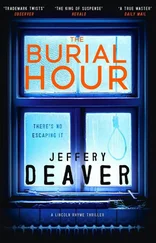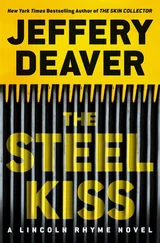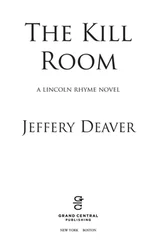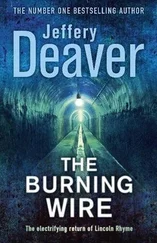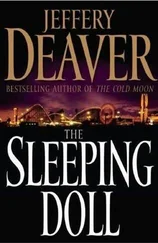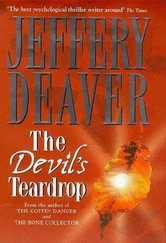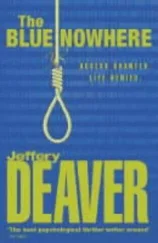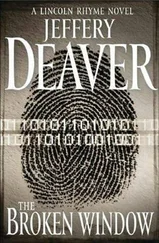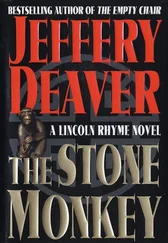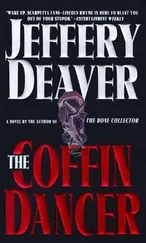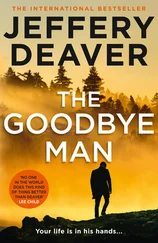The results on these slugs, though, came back negative. The needles themselves appeared to have been broken off the end of sewing needles, the sort you could buy anywhere. Untraceable.
“Never easy, is it?” Cooper muttered. At Rhyme’s direction, he also searched for registered owners of Mini-Masters, and the smaller Black Widows, in.22 magnum, and came back with nearly a thousand owners, none of whom had criminal records. Stores aren’t required by law to keep records of who buys ammunition and therefore they never did. For the time being, the weapon was a dead end.
“Pulaski?” Rhyme shouted. “What’s with the bug?”
“The exoskeleton – is that what you called it? That’s what you mean, sir?”
“Right, right, right. What about it?”
“No matches yet. What exactly is an exoskeleton?”
Rhyme didn’t answer. He glanced at the screen and saw that the young man was only a small way into the Hemiptera order of insects. He had a long way to go. “Keep at it.”
The GC/MS computer beeped; it had completed its analysis of the white blobs. On the screen was a peak-and-valley chart, below which was a block of text.
Cooper leaned forward and said, “We’ve got curcumin, demethoxycurcumin, bis-demethoxycurcumin, volatile oil, amino acids, lysine and tryptophan, theronine and isoleucine, chloride, various other trace proteins and large proportion of starches, oils, triglycerides, sodium, polysaccharides…Never seen that combination.”
The GC/MS was miraculous in isolating and identifying substances, but not necessarily so great in telling you what they added up to. Rhyme was often able to deduce common substances, like gasoline or explosives, just from a list of their ingredients. But these were new to him. He cocked his head and began to categorize those substances in the list that, as a scientist, he knew would logically be found together and which would not. “The curcumin, its compounds and the polysaccharides obviously fit together.”
“Obviously,” was the wry response of Amelia Sachs, who used to ditch science class in high school to go drag racing.
“We’ll call that Substance One. Then the amino acids, other proteins, starches and triglycerides – they’re often found together, too. We’ll call them Substance Two. The chloride -”
“Poison, right?” asked Pulaski.
“- and sodium,” muttered Rhyme, “are most likely salt.” A glance at the rookie. “Dangerous only in the case of people with high blood pressure. Or if you’re a garden slug.”
The kid turned back to the insect database.
“So – with the amino acids and starches and oils – I’m thinking Substance Two is a food, salty food. Go online, Mel, and find out what the hell curcumin is in.”
Cooper did. “You’re right. It’s a vegetable dye used in food products. Usually found in connection with those other items in Substance One. Volatile oils too.”
“What sort of food products?”
“Hundreds of them.”
“How ’bout some for-instances.”
Cooper began to read from a lengthy list. But Rhyme interrupted. “Hold on. Is popcorn on the list?”
“Let’s see…yeah, it is.”
Rhyme turned and called to Pulaski, “You can stop.”
“Stop?”
“It’s not an exoskeleton. It’s a shell from a popcorn kernel. Salt and oil and popcorn. Should’ve figured that one out up front, damnit.” It was a cheerful expletive nonetheless. “On the chart, Thom. Our boy likes junk food.”
“Should I write that?”
“Of course not. He could hate popcorn. Maybe he works in a popcorn factory or movie theater. Just add ‘popcorn.’” Rhyme looked at the chart. “Now let’s find out about that other trace. The off-white stuff.”
Cooper ran another GC/MS test. The results indicated that it was sucrose and uric acid.
“The acid’s concentrated,” the tech said. “The sugar’s pure – no other foodstuffs – and the crystalline structure’s unique. I’ve never seen it milled like that.”
Rhyme was troubled by this news. “Send it to the FBI’s bomb people.”
“Bomb?” Sellitto asked.
Rhyme said, “Haven’t been reading my book, hmmm?”
“No,” the big detective shot back. “I’ve been busy catching bad guys.”
“Touché. But it’d be helpful to at least take a look at the headings from time to time. As in ‘Homemade Explosive Devices.’ Sugar’s often an ingredient. Mix it with sodium nitrate and you’ve got a smoke bomb. With permanganate, it’s a low explosive – which can still do a lot of damage if you pack it into a pipe. I’m not sure how the uric acid figures but the Bureau’s got the best database in the world. They’ll tell us.”
The FBI’s lab is available to handle evidence analysis for state and local law enforcers, at no charge, provided that the requesting agency agrees to two things: to accept the FBI’s results as final and to show them to the defendant’s lawyer. Because of the Bureau’s generosity – and its talent – the agents are inundated with requests for assistance; they run more than 700,000 analyses a year.
Even New York ’s finest would stand in line like everyone else to get this bit of sugar analyzed. But Lincoln Rhyme had an in – Fred Dellray, a special agent in the FBI’s Manhattan office, often worked with Rhyme and Sellitto and he carried a lot of weight in the Bureau. Equally important was the fact that Rhyme had helped the FBI set up its PERT system – the Physical Evidence Response Team. Sellitto called Dellray, who was presently on the task force checking out those reports of potential terrorist bombings in New York. Dellray got on the horn to FBI HQ in Washington, D.C., and within minutes a technician had been recruited to help on the Unsub 109 case. Cooper sent him the results of the analyses and compressed digital images of the substance via secure email.
No more than ten minutes passed before the phone rang.
“Command, answer,” Rhyme snapped into his voice recognition control system.
“Detective Rhyme, please.”
“This’s Rhyme.”
“I’m Examiner Phillips down on Ninth Street.” Washington’s Ninth Street, he meant. FBI headquarters.
“What do you have for us?” Rhyme asked briskly.
“And thanks for calling back so fast,” Sachs said quickly. She sometimes had to run interference for Rhyme’s bluntness.
“No worries, ma’am. Well, I was thinking it was pretty odd, what you sent down. So I sent it to Materials Analysis. That did the trick. We’ve got a ninety-seven percent certainty as to the substance.”
How dangerous was the explosive? Rhyme wondered. He said, “Go ahead. What is it?”
“Cotton candy.”
That wasn’t a street name he knew. But there were a number of new-generation explosives that had detonation rates of thirty thousand feet per second, ten times the speed of a bullet. Was this one of those? He asked, “What’re its properties?”
A pause. “It tastes good.”
“What’s that?”
“It’s sweet. It tastes good.”
Rhyme asked, “You mean it’s real cotton candy, like you’d find at a fair?”
“Yeah, what’d you think I meant?”
“Never mind.” Sighing, the criminalist asked, “And the uric acid was from his shoe when he stepped in some dog pee on the sidewalk?”
“Can’t say where he stepped on it,” the examiner said, displaying the precision the Bureau was known for. “But the sample does test positive for canine urine.”
He thanked the man and disconnected. He turned to the team. “Popcorn and cotton candy on his shoes at the same time?” Rhyme mused. “Where’d that put him?”
“Ball game?”
“The New York teams haven’t played at home lately. I’m thinking maybe our unsub walked through a neighborhood where there’d been a fair or carnival in the past day or so.” He asked Geneva, “Did you go to any fairs recently? Could he have seen you there?”
Читать дальше
